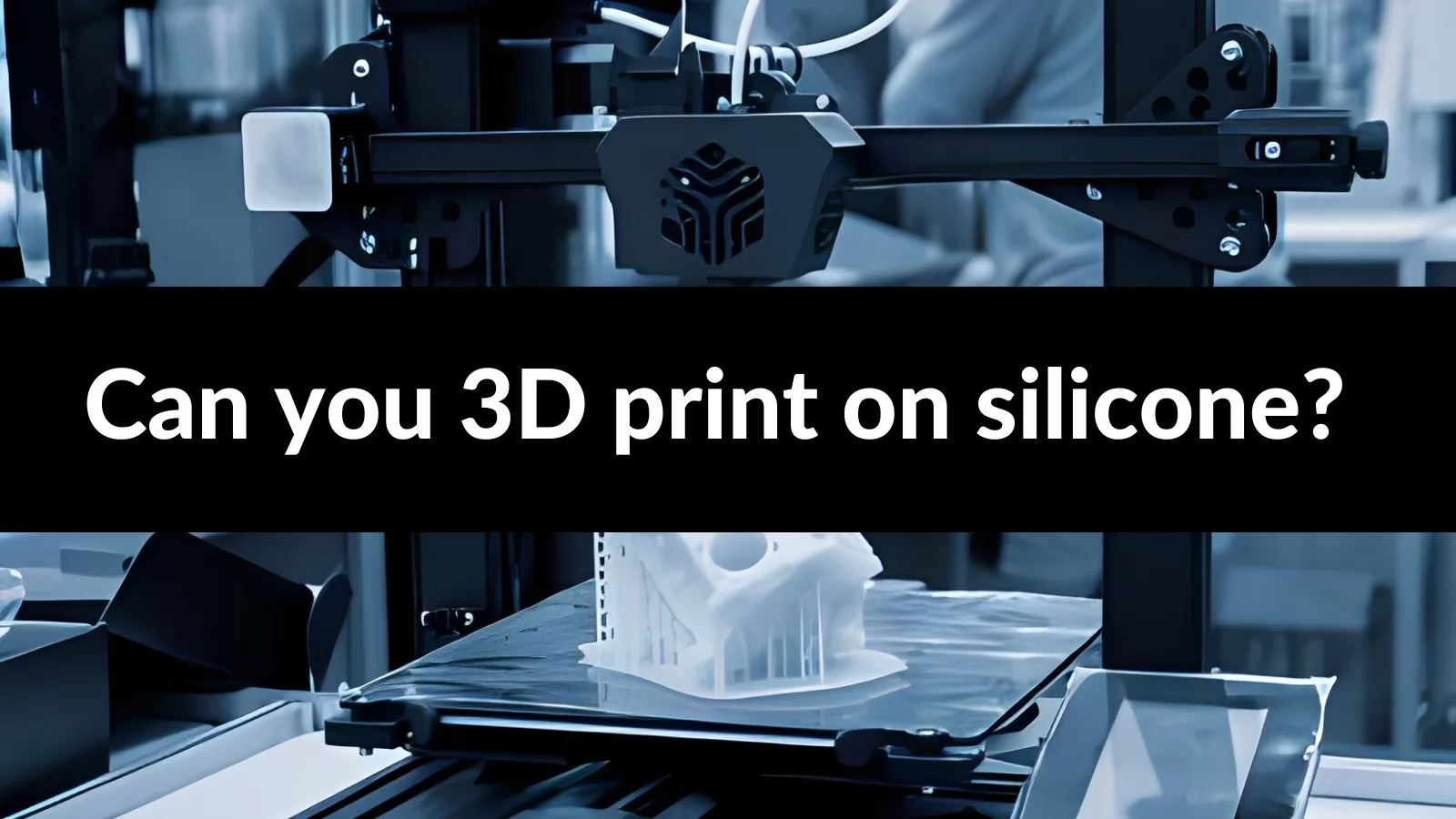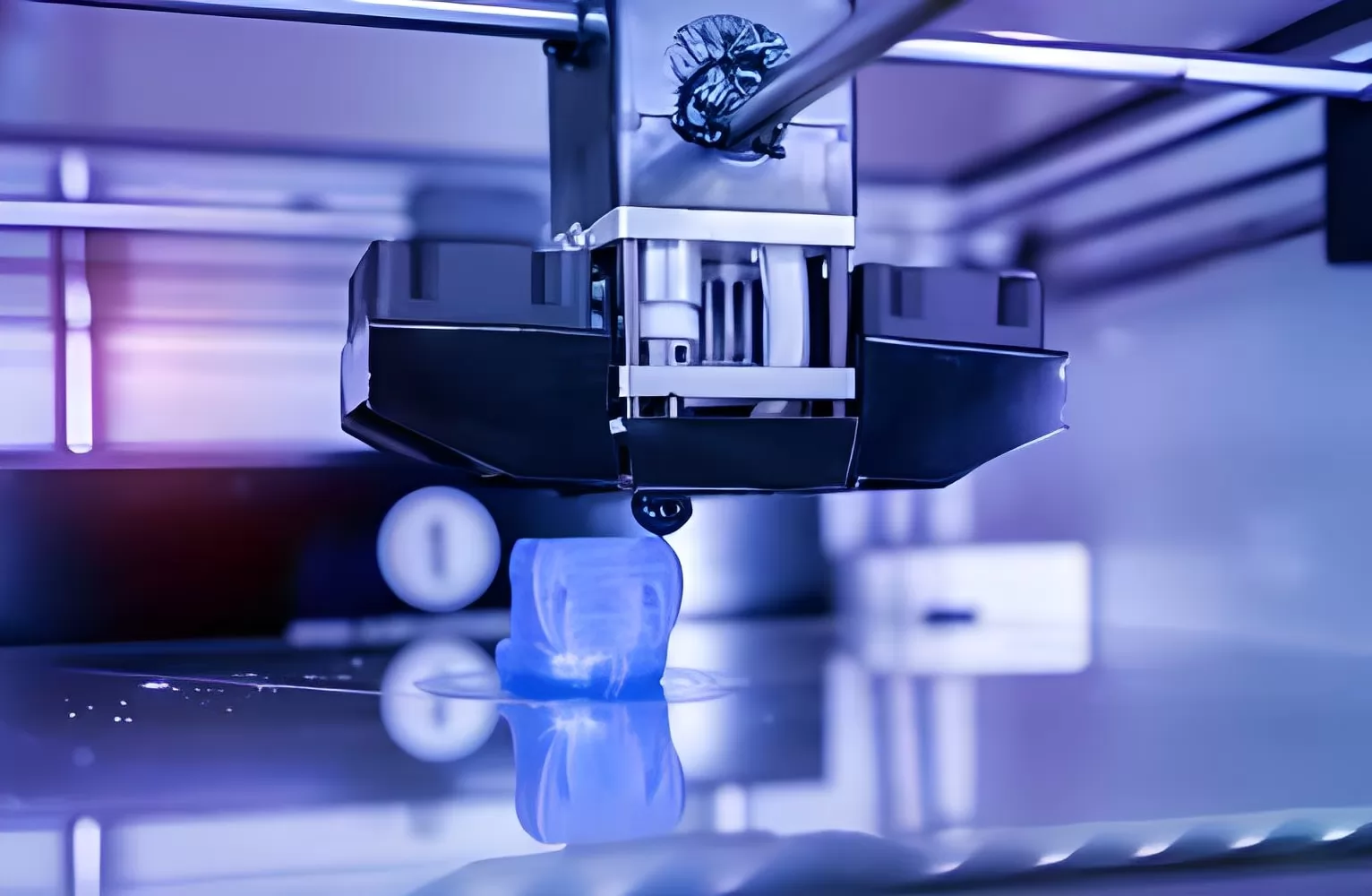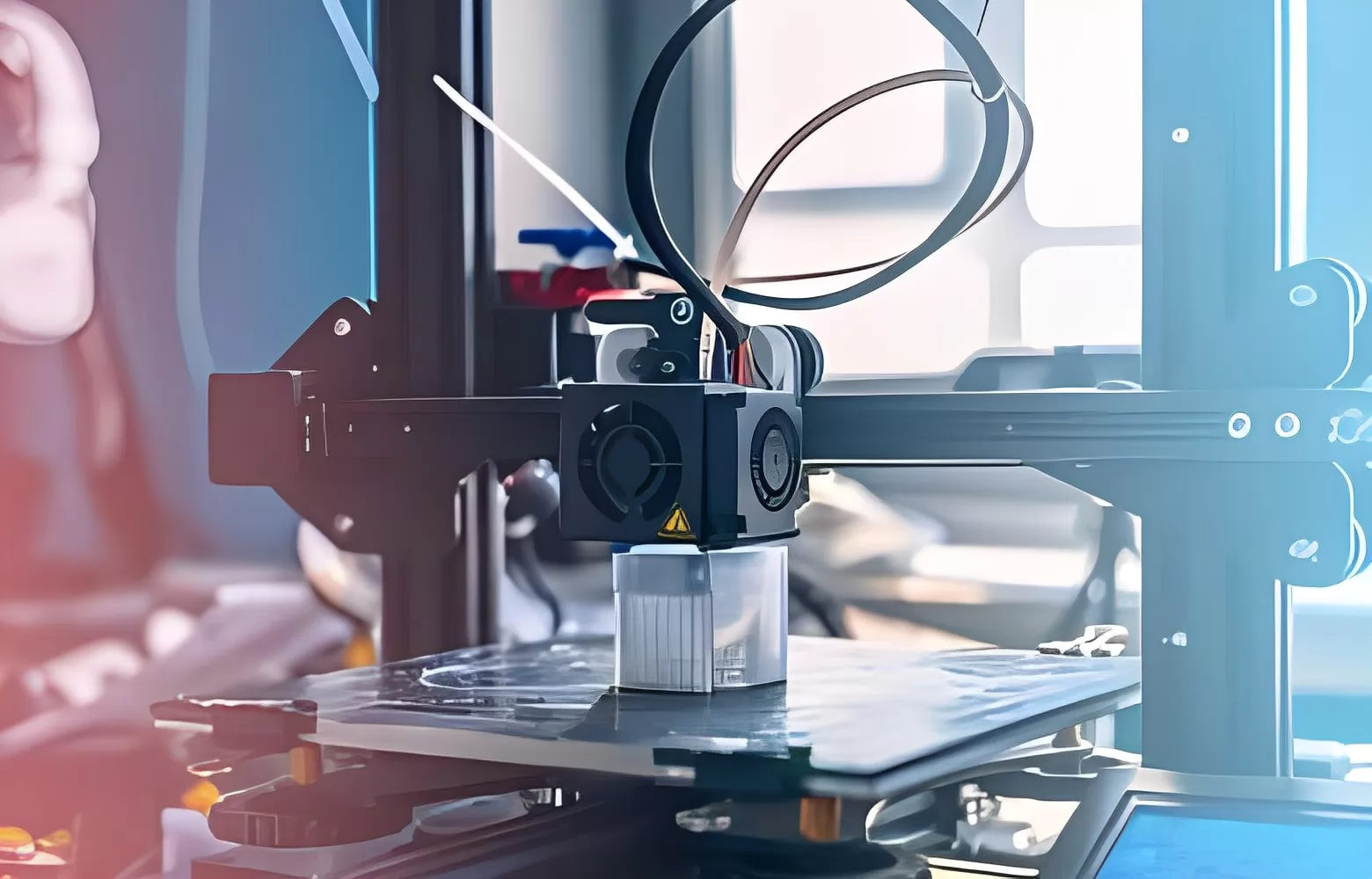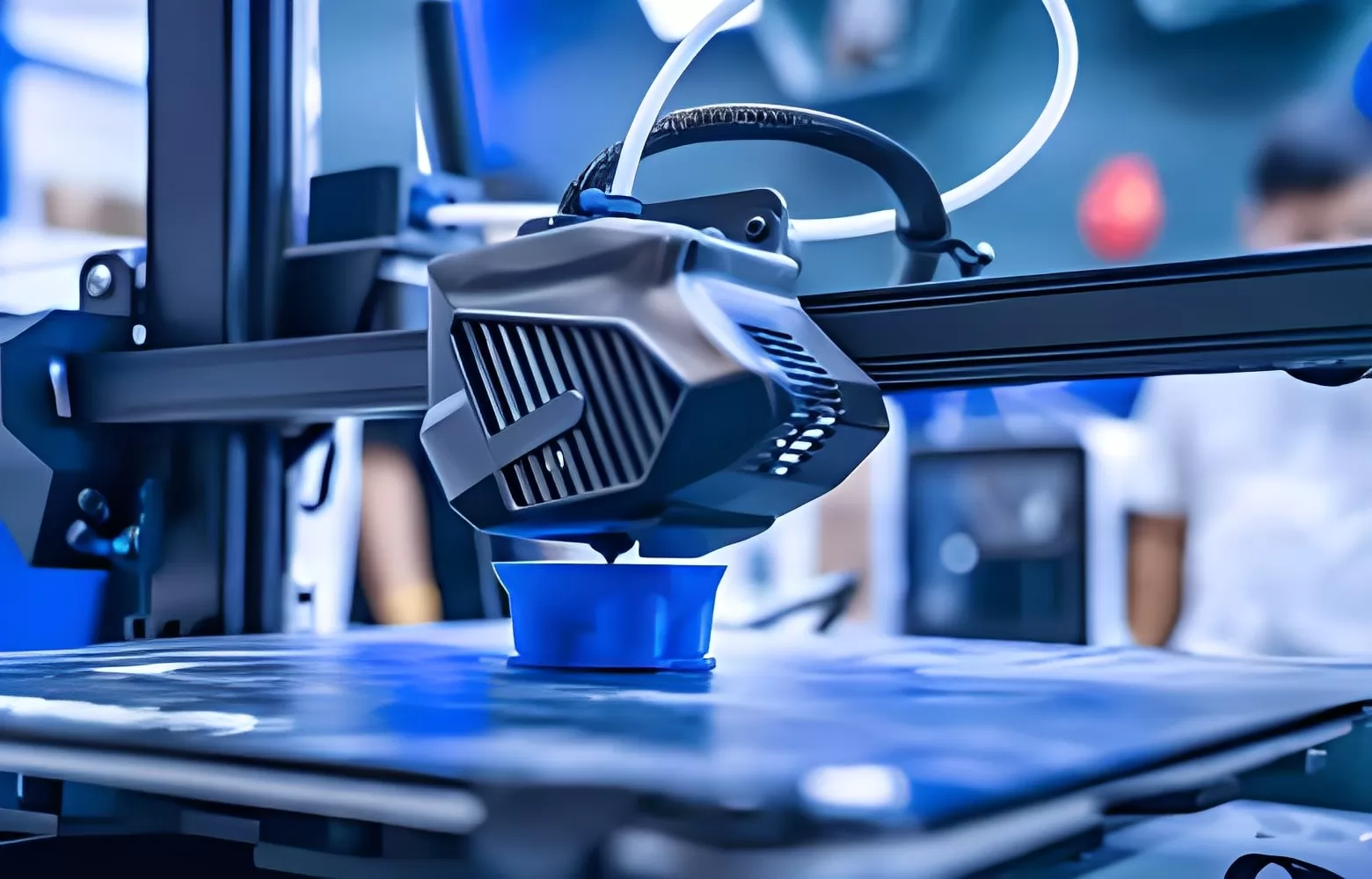
3D printing technology has evolved to enable the creation of complex structures across various materials. A pertinent inquiry within this domain is the feasibility of 3D printing on silicone, a versatile material known for its durability, flexibility, and resistance to extreme temperatures. This article aims to explore the current capabilities and limitations of 3D printing technologies in applying designs directly onto silicone surfaces or utilizing silicone as a base material for additive manufacturing processes.
3D Ways to 3D Print on Silicone
| Method | Description |
|---|---|
| Direct Silicone 3D Printing | Deposit layers of silicone material directly into the desired geometry. Ideal for creating complex parts and custom prototypes quickly. |
| 3D Printing Using Materials with Silicone-Like Properties | Utilize FDM, SLA, or SLS technologies with materials mimicking silicone properties (flexibility, thermal resistance) when direct silicone printing isn’t feasible. Provides similar characteristics without specialized equipment. |
| Casting or Molding Silicone Using 3D Printed Molds | Combine traditional silicone casting with 3D printing by creating molds (typically PLA or ABS). These molds are then used for casting silicone parts efficiently, making it cost-effective for small batch production. |
Direct Silicone 3D Printing
Direct silicone 3D printing represents a groundbreaking approach in the field of additive manufacturing, enabling the creation of objects directly from silicone. This technique diverges significantly from traditional manufacturing methods by depositing layers of silicone in a precise manner to form complex geometries and structures that were previously challenging or impossible to achieve. The process relies on specialized 3D printers capable of handling the unique properties of silicone, such as its flexibility and temperature resistance.
Advantages of 3D Printing with Silicone
- Flexibility: 3D printing with silicone offers a unique combination of flexibility, allowing the creation of intricate shapes and structures that traditional manufacturing methods struggle to achieve.
- High Temperature Resistance: Silicone materials used in 3D printing exhibit high-temperature resistance, making them suitable for applications in industries like automotive where parts are exposed to extreme heat conditions.
- Biocompatibility: Silicone’s biocompatibility makes it ideal for medical applications, such as prosthetics, implants, and other bodily contact devices.
- Intricate Detailing: 3D printing with silicone allows for the production of parts with intricate details and complex geometries without the need for costly tooling or molds, facilitating rapid prototyping and on-demand manufacturing.
- Durability: Silicone items are known for their durability, capable of withstanding extreme conditions while retaining their mechanical properties. This durability extends the lifespan of products, contributing to long-term sustainability.
- Customization: 3D printing with silicone enables manufacturers to achieve a high level of customization, catering to specific needs efficiently. This is valuable in industries like medical and automotive for creating tailor-made components and custom-fit parts.
Limitations of Printing with Silicone
- Specialized Equipment and Expertise: Printing with silicone requires specific equipment and a high level of expertise. Unlike standard FDM printers used for materials like PLA or ABS, silicone 3D printing demands specialized machines, which can be a substantial investment in both machinery and training.
- Curing Process Complexity: Silicone does not harden through cooling, as thermoplastics do. Instead, it requires curing, often at elevated temperatures or with the use of catalysts. This adds complexity to the printing process, requiring precise control over environmental conditions to ensure consistent results.
- Elasticity and Flexibility Challenges: Silicone’s inherent elasticity and flexibility, while advantageous for the final product’s functionality, can make achieving accurate and repeatable details challenging during the printing process. The material’s behavior may vary under different temperatures and curing conditions, leading to potential inconsistencies.
- Compatibility with Other Materials: In cases where silicone parts need to adhere to or integrate with components made from different materials, compatibility issues may arise. Differences in thermal expansion rates or chemical compatibility can pose challenges. For example, silicone does not naturally adhere well to PLA without surface treatment or an adhesive intermediary layer, highlighting the need for careful consideration.
3D Printing Using Materials with Silicone-like Properties
3D printing technologies have advanced to incorporate various materials that emulate the properties of silicone without directly printing with silicone itself. Each 3D printing technology—FDM, SLA, and SLS—offers different materials that provide alternatives to silicone, each with unique characteristics suited for specific applications.
| 3D Printing Technology | Alternative Materials to Silicone | Advantages | Limitations |
|---|---|---|---|
| FDM | - Thermoplastic elastomers (TPEs) | - Flexibility and elasticity | - May not perfectly replicate silicone properties |
| - Thermoplastic polyurethane (TPU) | - Suitable for shock absorption and soft-touch components | - Limited to certain applications | |
| SLA | - Resin-based formulations | - Precision and accuracy | - May not match silicone properties entirely |
| - Similar tactile feel and mechanical properties as silicone | - Limited to prototyping applications | ||
| SLS | - Thermoplastic polyurethanes (TPUs) | - Complex geometries without support structures | - Material behavior may not fully mimic silicone |
| - Good flexibility and strength | - Limited to SLS technology |
FDM Material Alternatives to Silicone
In seeking alternatives to silicone for 3D printing, particularly within the Fused Deposition Modeling (FDM) technology, it’s essential to consider materials that offer similar properties such as flexibility, heat resistance, and chemical stability. Thermoplastic elastomers (TPEs) and thermoplastic polyurethane (TPU) emerge as the primary alternatives in this context.
TPEs are known for their elasticity, which closely resembles that of silicone. This characteristic makes TPE a viable option when printing projects demand a high degree of flexibility and a soft touch experience. Additionally, TPE exhibits decent durability and abrasion resistance, making it suitable for creating parts that will undergo frequent flexing or stretching.
TPU is another alternative material popular among FDM users for its remarkable flexibility and resilience. What sets TPU apart is its superior abrasion resistance and ability to withstand higher pressures and impacts without deforming. These qualities make TPU especially beneficial in the manufacturing of durable parts requiring elasticity such as flexible hoses, seals, and gaskets.
Both TPE and TPU can be printed on most standard FDM printers, offering ease of access for users looking to replicate silicone-like properties without directly working with silicone itself. It’s important to adjust printer settings appropriately when working with these materials to achieve the best results—factors like print speed, temperature, and retraction settings can significantly impact the quality of the final product.
The choice between TPE and TPU largely depends on the specific requirements of the project at hand. Where extreme flexibility combined with good durability is needed, TPE might be the better choice. For applications demanding higher wear resistance along with flexibility,—consider using TPU instead.

SLA Material Alternatives to Silicone
Stereolithography (SLA), a renowned 3D printing technique, utilizes ultraviolet (UV) resin in a process of layer-by-layer creation that results in highly detailed and smooth-surfaced outputs. While direct silicone 3D printing poses specific challenges, there are SLA resins available which offer properties akin to silicone, catering to a broad spectrum of applications where flexibility, durability, and heat resistance are requisite.
Among the materials used in SLA 3D printing as alternatives to silicone, certain resins have been particularly engineered to mimic the desirable attributes of silicone without inheriting its direct printing limitations. These resins usually exhibit remarkable elasticity, robustness against various forms of mechanical stress, and an ability to withstand considerable temperature ranges. The significance of this lies in their versatility for industries such as automotive, healthcare, and electronics where the unique properties of silicone are often necessary.
Additionally, these silicone-like SLA resins prioritize user safety and biocompatibility, making them suitable for creating skin-contact items or components destined for medical use. Their non-toxic nature when fully cured is a crucial factor for applications within sensitive environments.
The advantages of using such materials include not only their mimicked physical qualities but also the inherent benefits of SLA printing technology - high resolution and intricate detail capabilities. This makes them perfect for prototypes or end-use parts that require both the functional properties of silicone and the aesthetic or complex geometrical features achievable with SLA printing.
Choosing an appropriate silicone-like resin depends on specific project requirements including flexibility needs, exposure conditions (to chemicals or UV light), and desired durability. Manufacturers typically provide comprehensive data sheets detailing each material’s property which serves as a valuable guide for making an informed selection.
SLS Material Alternatives to Silicone
Selective Laser Sintering (SLS) technology offers a distinctive approach to fabricating parts that require characteristics similar to those of silicone, without directly printing with silicone itself. This method utilizes powder-based materials, which are sintered layer by layer using a laser, to create durable and flexible objects. Among the available materials for SLS printing, TPU (Thermoplastic Polyurethane) stands out as a notable alternative to silicone due to its elasticity and high resistance to abrasion and impact.
TPU’s versatility enables the production of parts with varying degrees of flexibility, depending on the formulation. It is particularly well-suited for applications demanding both toughness and pliability, closely mimicking some of the desirable traits found in silicone. For instance, TPU can be used in creating flexible joints, seals, and shock-absorbing components—areas where traditionally silicone would have been employed.
While TPU does not exactly replicate all properties of silicone—such as temperature tolerance or chemical resistance—it presents a compelling option when these specific attributes are not critical for the application at hand. Adopting TPU within the realm of SLS 3D printing expands design possibilities and functional applications significantly, by leveraging a material that is not only effective but also adaptable to complex geometries often challenging to achieve with conventional silicone molding processes.

Casting or Molding Silicone Using 3D Printed Molds
Casting or molding silicone using 3D printed molds provides a versatile method for producing intricate silicone components that may not be feasible with traditional manufacturing methods. This process generally involves creating a mold using a 3D printer, typically from materials like PLA (Polylactic Acid), and then pouring silicone into the mold to create the final part.
A key advantage of this technique is the ability to rapidly prototype designs and make modifications with minimal cost implications. The precision of 3D printing allows for high-detail molds, which in turn can produce complex silicone parts with a high degree of accuracy. This process is particularly beneficial for custom projects or small-scale production runs where traditional mold-making techniques would be prohibitively expensive.
There are some considerations to keep in mind when casting silicone in 3D printed molds. One common question is whether silicone sticks to PLA, one of the most commonly used materials in 3D printing for making molds. Generally, silicone does not adhere strongly to PLA without special surface preparations, making it an ideal material choice for molds. However, achieving a smooth surface finish on the interior of the PLA mold is crucial; otherwise, any imperfections will transfer to the silicone component.
Release agents, such as soapy water or specialized chemical solutions, may also be applied to the interior of the PLA mold before casting the silicone. This helps ensure that once cured, the silicone part can be demolded easily without damaging either the part or the mold itself. Additionally, post-processing techniques, such as sanding or coating the PLA mold with an epoxy resin, can improve its longevity and enhance the surface quality of cast parts.
Using 3D printed molds for casting silicone bridges traditional manufacturing techniques with modern prototyping capabilities. It offers an efficient path from design to tangible product while maintaining flexibility in both design iterations and material choice. This method circumvents some limitations associated with direct printing with silicone or attempting to mimic its properties through other printable materials by utilizing the best aspects of both worlds—precise and customizable mold production combined with the desirable attributes of silicone parts such as durability and heat resistance.
Difference Between Direct Silicone 3D Printing, Materials with Silicone-Like Properties, and Casting Using 3D Printed Molds
| Difference | Direct Silicone 3D Printing | Materials with Silicone-Like Properties | Casting Using 3D Printed Molds |
|---|---|---|---|
| Process | Objects are 3D printed directly from silicone material. | 3D printing using materials that mimic silicone properties. | Silicone is poured into 3D printed molds and allowed to cure. |
| Materials | Silicone material is used. | Alternative materials that mimic silicone properties. | PLA or similar materials for 3D printed molds, liquid silicone for casting. |
| Properties | Retains authentic silicone properties like flexibility and heat resistance. | Mimics some silicone properties but may not match exactly. | Combines 3D printed precision with silicone’s physical characteristics. |
| Applications | Suitable for industries requiring authentic silicone properties (e.g., medical, automotive). | Versatile applications, cost-effective alternative to silicone. | Suitable for complex shapes and detailed parts in silicone. |
| Advantages | Maintains authenticity in material properties. | Cost-effective with some silicone-like qualities. | Precision in 3D printed molds with silicone’s benefits. |
| Disadvantages | Limited accessibility to technology for direct silicone printing. | May compromise on some silicone properties. | Additional steps in mold-making extend production time. |
| Key Considerations | Ideal for applications demanding genuine silicone properties. | Provides a more affordable option with good similarity to silicone. | Combines additive manufacturing design with silicone’s physical qualities. |
Does silicone stick to PLA?
Generally, silicone does not inherently adhere well to PLA without some form of surface treatment or adhesion promoter. PLA, a popular material used in Fused Deposition Modeling (FDM) 3D printing, has a relatively smooth surface that does not offer the mechanical grip that silicone might require for optimal adhesion.
For those looking to combine these two materials, specifically aiming to cast silicone into PLA molds or directly print onto PLA substrates, several preparatory steps can improve adhesion. Surface roughening through sanding or applying a primer designed for plastics can create a more favorable environment for silicone to adhere. Additionally, using a silicone adhesive designed for plastics can further improve the bond between silicone and PLA.
However, it’s also critical to consider the end use of the combined materials. In cases where strength and durability are essential, testing the bonded interface under conditions mimicking real-world use is advisable. The interaction between silicone and PLA might differ based on factors like the type of silicone (e.g., RTV silicones), application methods, and post-processing techniques used.
In Conclusion
3D printing on silicone combines innovative techniques with this versatile material, opening up a wide range of possibilities in various industries including medical, automotive, and fashion.
Explore the potential applications and benefits of 3D printing on silicone for your specific industry needs. Contact our expert team today to discuss how we can assist you in implementing this cutting-edge technology into your projects with precision and efficiency.





